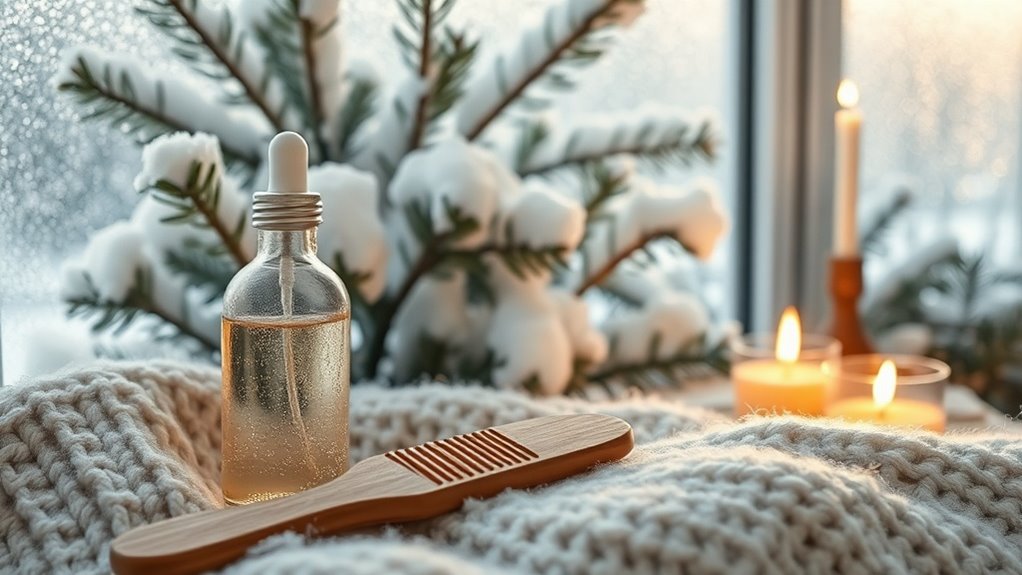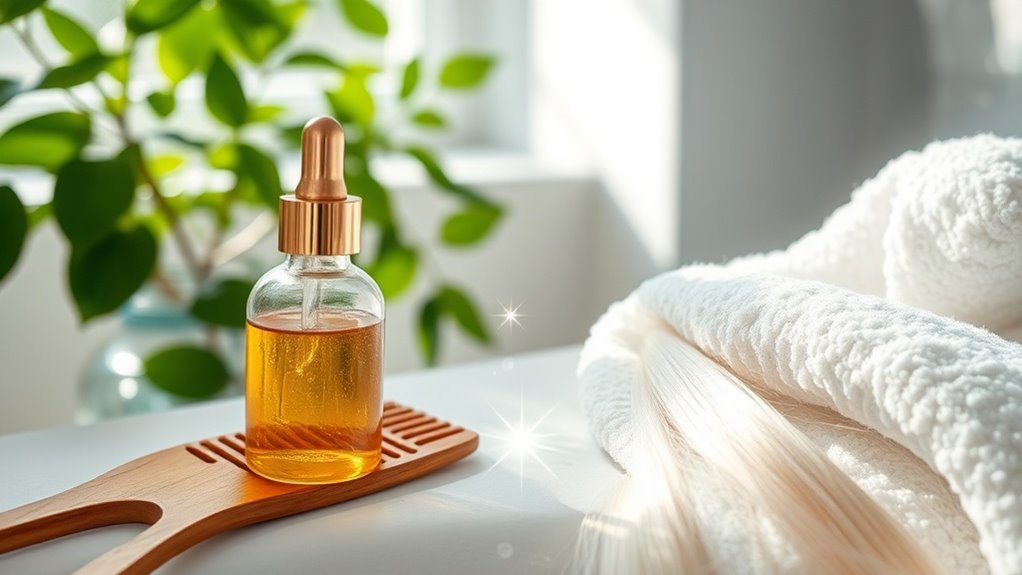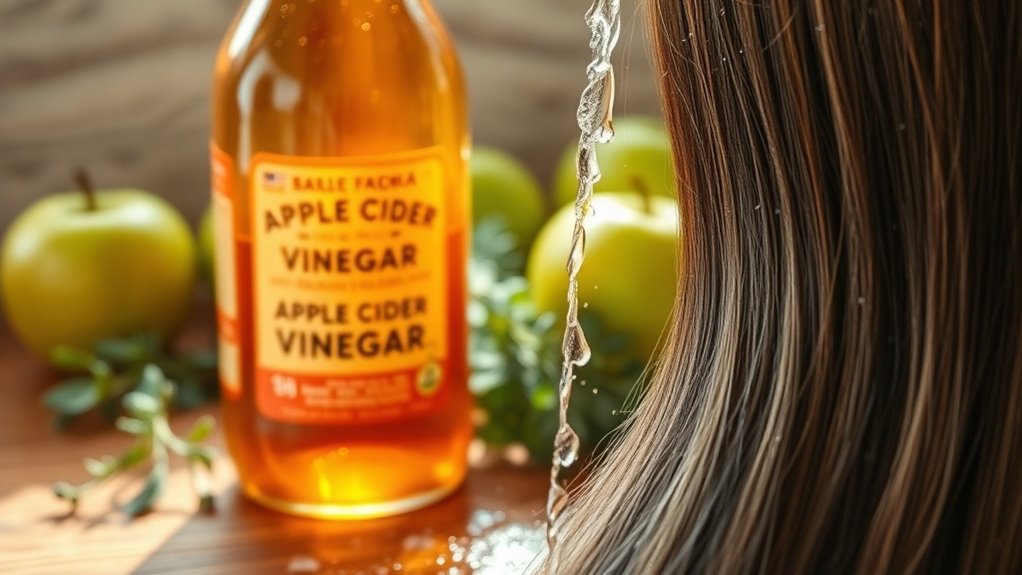My Winter Hair Doesn’t Break Anymore – Simple Fixes I Swear By
Did you know that nearly 70% of people experience hair breakage during the winter months? This seasonal struggle often stems from dry air and harsh weather conditions. But it doesn’t have to be your reality. I’ve discovered several simple fixes that can transform your hair care routine. Let’s explore effective strategies that can keep your hair strong and healthy, even when winter tries to take its toll.
Understanding Winter Hair Damage
As colder temperatures set in, your hair can suffer significant damage if you’re not careful. The winter air lacks humidity, leading to dryness and brittleness. You may notice increased breakage and static, making winter dry hair care essential. To combat these issues, focus on protective styles and gentle products. Additionally, incorporating hydration and moisture retention into your routine can make a noticeable difference. Recognizing these factors early helps you maintain healthy, vibrant hair all season long.
Hydration Is Key
Dry air in winter can wreak havoc on your hair, making hydration even more important. Staying hydrated not only benefits your hair but also helps enhance your skin health, as the essential role of proper water intake contributes to a glowing complexion.
Here are some easy ways to keep your locks moisturized:
- Use a deep conditioning treatment weekly.
- Opt for hydrating shampoos and conditioners.
- Drink plenty of water to nourish from within.
- Apply leave-in conditioner to seal moisture.
Stay committed to hydration, and your hair will thrive this winter!
Protective Hairstyles to Try
When it comes to winter hair care, protective hairstyles are your best friend. Braids minimize damage, buns offer easy styling, and twists provide extra protection against harsh elements. In addition to these styles, incorporating moisture retention strategies is crucial to ensure your hair stays hydrated throughout the season. Let’s explore these options so you can keep your hair healthy all season long.
Braids for Minimal Damage
If you’re looking for a stylish way to protect your hair from winter’s harsh elements, braids offer an excellent solution.
Here are four braid styles to contemplate for minimal damage:
- Dutch braids
- French braids
- Rope braids
- Box braids
These styles not only reduce breakage but also keep your hair neat and manageable throughout the season.
Enjoy the protection and style!
Buns for Easy Styling
After exploring the protective benefits of braids, consider incorporating buns into your winter hairstyles for easy styling and maximum protection.
Buns keep your hair tucked away, reducing friction and exposure to harsh winter elements. Try a low, messy bun for a casual look, or a sleek top knot for something polished.
Both styles can be quickly created and offer lasting protection.
Twists for Extra Protection
For those seeking effective protective styles this winter, twists offer an excellent option that combines versatility and care for your hair.
Here are four twist styles you can try:
- Two-Strand Twists
- Flat Twists
- Twist-Outs
- Senegalese Twists
Each style protects your strands from winter elements while keeping your look fresh and manageable.
Embrace the season with these simple twists!
The Right Products for Winter Care
As the temperature drops and winter’s chill sets in, selecting the right products for your hair becomes essential for maintaining its health and vibrancy. Focus on nourishing shampoos, deep conditioners, and leave-in treatments to combat dryness. Here’s a table to guide you in choosing the best products:
| Product Type | Recommended Ingredient |
|---|---|
| Shampoo | Sulfate-free |
| Conditioner | Argan oil |
| Leave-in Treatment | Shea butter |
| Hair Oil | Coconut oil |
Additionally, remember to shield your hair from harsh environmental factors that can exacerbate winter dryness.
Nutritional Support for Healthy Hair
To keep your hair healthy this winter, you need to pay attention to your nutritional intake.
Essential vitamins and minerals play an important role in hair strength and growth, while proper hydration can prevent dryness and brittleness. Incorporating foods that enhance radiant skin not only fuels your body but also guarantees your hair looks vibrant and resilient.
A balanced diet not only fuels your body but also guarantees your hair looks vibrant and resilient.
Essential Vitamins and Minerals
When winter rolls in, your hair can suffer from dryness and brittleness, making it essential to nourish it with the right vitamins and minerals.
Consider focusing on these key nutrients for healthy hair:
- Biotin – Supports hair strength.
- Vitamin E – Enhances circulation.
- Zinc – Aids in repair and growth.
- Iron – Promotes oxygen transport.
These essentials will help you combat winter’s harsh effects!
Hydration and Hair Health
Although you mightn’t think about it during the colder months, staying hydrated is essential for maintaining healthy hair.
Drinking enough water helps keep your hair moisturized from the inside out, preventing dryness and breakage. Aim for at least eight glasses a day.
Consider herbal teas or water-rich fruits and veggies as tasty alternatives to meet your hydration needs effortlessly.
Balanced Diet Benefits
A well-balanced diet plays a significant role in nurturing your hair and combating the harsh effects of winter.
To support healthy hair growth, focus on these key nutrients:
-
Proteins – Essential for strong hair structure.
-
Omega-3 Fatty Acids – Boosts scalp health and hydration.
-
Vitamins A & C – Promote collagen production for vibrancy.
-
Iron – Supports oxygen circulation to hair follicles.
Make these staples part of your routine!
Regular Maintenance and Treatments
To keep your hair healthy during winter’s harsh conditions, regular maintenance and treatments are essential.
Schedule weekly deep conditioning sessions to nourish and hydrate your hair. Incorporate a leave-in conditioner for added moisture and protection.
Don’t forget to trim split ends every 6-8 weeks. Using a silk scarf or pillowcase can also minimize friction and breakage while you sleep. Additionally, ensure you are drinking enough water to maintain optimal skin hydration, as it contributes to overall hair health.





